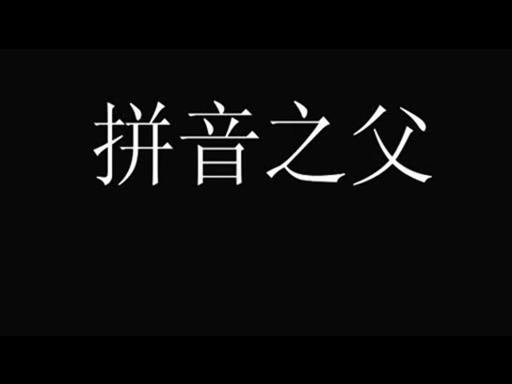1.2 Pinyin
There are various systems for transcribing Chinese sounds into the Roman alphabet. Pinyin was adopted as the official system in the People’s Republic of China in 1958, and has since become the standard and most-used form of transcription in schools, the media and elsewhere. This course uses pinyin in the teaching of pronunciation.
Watch the video below to learn more about how pinyin was created.

Transcript: Video 3
[MUSIC PLAYING]
[TEXT ON SCREEN: pin yin zhi fu. The Father of Pinyin.]
[MUSIC PLAYING]
Read the language note below about pinyin sounds and then, in the activity that follows, listen to how each one is pronouced.
Language note: single finals and initials
Chinese is a vowel-dominated language. In total, there are 35 vowel sounds, known as ‘finals’ because they occur at the end of syllables. The six vowel sounds you will hear in Activity 2 are called ‘single finals’ and are written in pinyin as a , e , i , o , u and ü . These simple vowel sounds are put together in various combinations to form 29 ‘compound finals’, which are beyond the scope of this course.
There are 23 consonant sounds in Chinese, called ‘initials’ because they appear at the start of syllables. Here are the 23 initials:
| b | p | m | f | d | t | n | l |
| g | k | h | w | y | j | q | x |
| z | c | s | zh | ch | sh | r |
Activity 2 Finals and initials
When you listen to the audio track below you will hear six single vowels, known as finals in Chinese. Repeat after each sound.
a e i o u ü
You will then combine these vowels with some consonants, known as initials in Chinese. Note how similar they sound to some English consonants. Repeat after each sound.
ba pa ma fa de te ne le gu ku hu wo yi
You will then hear some consonants, or initials, combined with the final i. Listen and repeat.
ji qi xi zi ci si zhi chi shi ri
